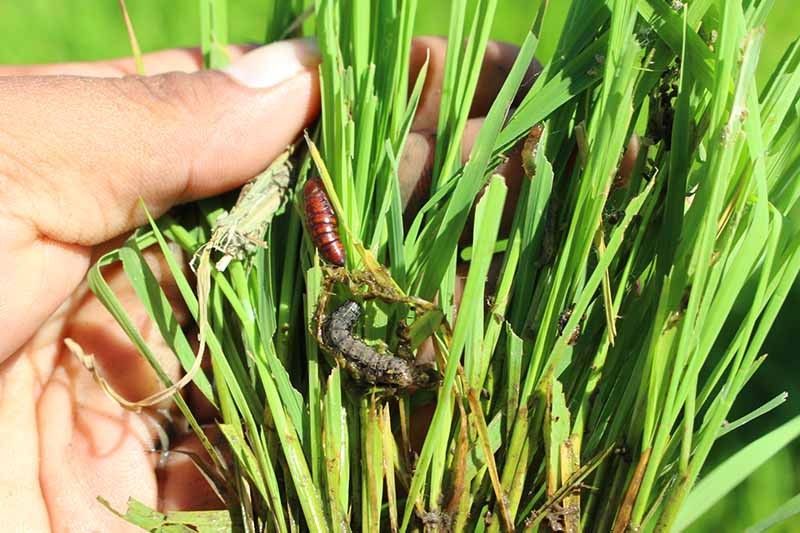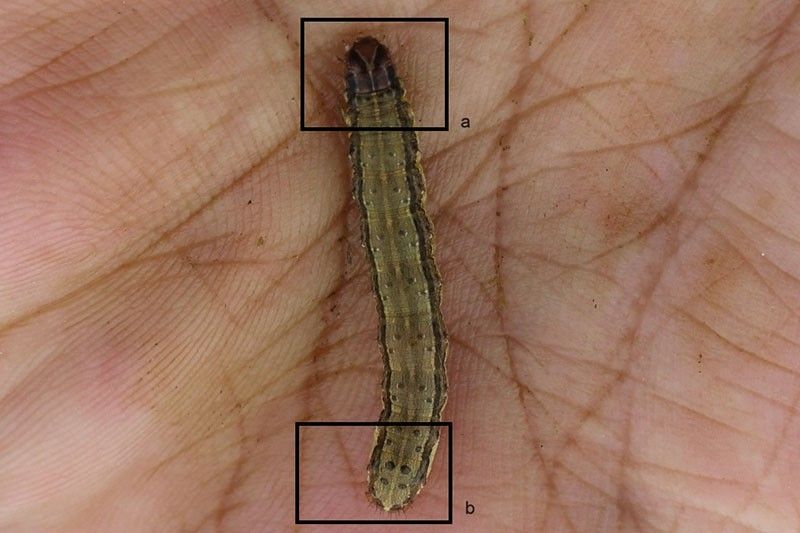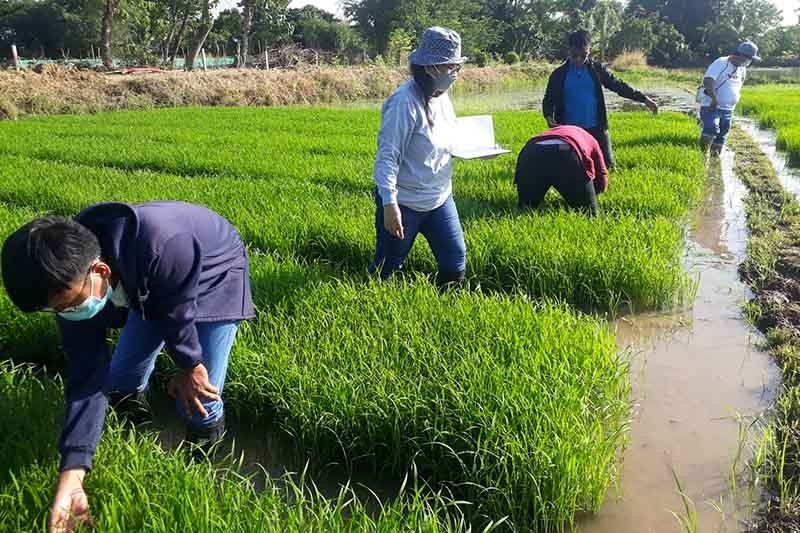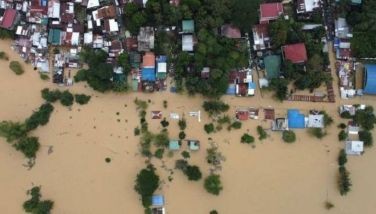Scientists probe climate change's role in new pest infestation in PH rice fields

NUEVA ECIJA, Philippines — Farmer Rowel Delos Santos, 42, from Enrile, Cagayan almost cried out in despair as his seven-hectare rice field was devoured overnight by a pest he had never encountered before.
"I feel like crying out of frustration because I left my job in another country to become a farmer and to stay for good in the Philippines. It's sad that all the hard work we’ve invested in planting was wasted overnight," Delos Santos said in Filipino as he recalled the incident in 2021.
Delos Santos admitted that he was caught off guard. The only rice pests he was familiar with were stem borer, rice bug, and false smut. Worms could also be seen, but only one at a time.
To get rid of the swarming pest, Delos Santos immediately irrigated the field and applied insecticides to areas that had not yet received water. He was left frightened as the insecticides could not kill all pests, leaving all seven hectares of his land barren.
The new pest identified was fall armyworm (FAW), commonly found in the southeastern United States.
Farmers, researchers, and government officials are now racing to know more about the invasive worm, as the El Niño phenomenon and the overall warmer climate provide favorable conditions for its increased spread.
FAW and climate change

Fall armyworm (Spodoptera frugiperda) is a different species from armyworm and cutworm that are commonly found on other crops. It has a distinct four black dots arranged in a square at the last segment of its abdomen and an inverted “Y” on the head.
Fall armyworm has already been observed in 14 municipalities in Cagayan Valley. Damage on rice due to FAW was also reported in Nueva Ecija, according to a 2023 study by the Philippine Rice Research Institute (PhilRice), Department of Agriculture-Regional Crop Protection Center (DA-RCPC) 2, and Centre for Agriculture and BioSciences International – South East Asia (CABI-SEA).
According to Evelyn Valdez, a researcher from the Crop Protection Division of PhilRice, scientists are looking at climate change as one of the drivers of the migration of fall armyworm to the Philippines.
"[FAW] may die due to weather extremities (e.g. too high or too low temperature), so most likely, they will migrate to other places or countries where environmental or weather conditions are favorable for their development,” Valdez said.
A 2021 paper published by researchers in Mexico found that fall armyworms develop faster in warmer conditions, making them less vulnerable to predation or parasitism common during the larval stage.
Fall armyworms face risks for a shorter period in warmer conditions. This advantage ensures that a larger portion of the worms' population can successfully reach the adult phase.
Help for farmers

Hilario dela Cruz, 83, a farmer from the Science City of Muñoz in Nueva Ecija, had a similar experience with fall armyworms. Nueva Ecija is the rice granary of the Philippines.
Dela Cruz was about to transplant his rice seedlings to the field when he discovered that fall armyworms were already feasting on his crops.
"The entire seedbed was infested. Because it’s too late for us to buy seeds, we just bought seedlings instead so we could transplant immediately,” Dela Cruz said.
When FAW first attacked Cagayan in 2021, DA-RCPC 2 immediately provided rice farmers with biological control agents and insecticides. The agency also strengthened its information dissemination about the pest through different media. Ongoing monitoring and validation of FAW are currently being conducted.
“The current FAW invasion has [been] reduced to 20 to 25% infestation now that farmers are more knowledgeable than before. However, they are still dependent on insecticides,” Minda Flor Aquino, chief of DA-RCPC 2 Center, said.
PhilRice's Valdez emphasized the need for additional research on the emerging rice pest to develop effective management measures beyond chemical control. She noted that relying solely on chemicals to control rice pests is not a sustainable solution as pests could develop resistance to particular chemicals.
"Misuse of insecticides or pesticides in general could also lead to damage not just in the environment but also in one's health. In addition, it could also kill the beneficial organisms that help us in combating pests such as FAW," Valdez said.
With El Niño projected to last until the first half of 2024, a prolonged drought is expected—a condition favorable for FAW. Aside from continuous monitoring of FAW occurrence, Valdez and her team are also doing research on possible factors that trigger its spread.
“Fortunately, it's not yet that severe since it has only been spotted in a number of locations and in seedling stages unlike in other countries like the USA. Nevertheless, we're interested in identifying the factors that lead to its occurrence,” Valdez said.
While he had not experienced another FAW attack, Delos Santos still feared the possibility of a new invasion. For him, it is important for farmers to explore other sources of income in case the pest wreaks havoc again.
He was just thankful that after the costly interventions he had made, his crops had managed to recover. But the regret of leaving his job abroad was now apparent as he realized the difficult reality of being a full-time farmer.
“It is difficult for small-time farmers to think of other sources but that’s the trend nowadays. So it’s either you take the risk or end up just relying on farming to earn,” Delos Santos said.
For more information about the preventive measures in managing the Fall armyworm, you may access the FAW pest alert here.
-- This story was supported by Climate Tracker Asia and the U.S. Embassy in the Philippines.
- Latest



























